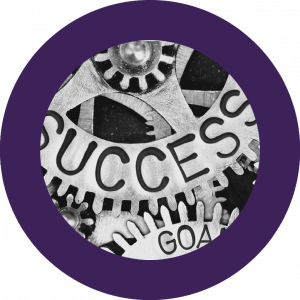Building agile teams is essential for organisations seeking to adapt to the rapidly changing business landscape. Agile teams promote #collaboration, flexibility, and #innovation, enabling companies to respond quickly to customer needs and market demands. In this blog post, we will explore ten proven strategies backed by research and industry experts to build agile teams. The following sources and references have been cited to support the information presented.
teams promote #collaboration, flexibility, and #innovation, enabling companies to respond quickly to customer needs and market demands. In this blog post, we will explore ten proven strategies backed by research and industry experts to build agile teams. The following sources and references have been cited to support the information presented.
1. Foster a culture of trust and psychological safety:
Trust and psychological safety are fundamental for creating an environment where team members feel comfortable taking risks and expressing their opinions. This enables effective collaboration and promotes innovation within agile teams.
Source: Edmondson, A. C. (1999). Psychological safety and learning behavior in work teams. Administrative Science Quarterly, 44(2), 350-383.
2. Embrace cross-functional collaboration:
Encourage collaboration across diverse skill sets and departments to foster a broader perspective and enhance problem-solving capabilities. Cross-functional collaboration facilitates knowledge sharing and boosts adaptability within agile teams.
Source: Ries, E. (2011). The Lean Startup: How Today’s Entrepreneurs Use Continuous Innovation to Create Radically Successful Businesses. Crown Business.
3. Encourage continuous learning and skill development:
Agile teams should prioritise continuous learning to keep up with evolving technologies and industry trends. Promote a learning culture by providing opportunities for training, workshops, and encouraging personal development.
Source: DeRosa, D. M., & Lepsinger, R. (2010). Virtual team success: A practical guide for working and leading from a distance. John Wiley & Sons.
4. Utilise agile methodologies:
Adopt agile methodologies such as Scrum or Kanban to enhance collaboration, prioritise work, and facilitate iterative development. These methodologies provide frameworks and processes that support agility and adaptive planning.
development. These methodologies provide frameworks and processes that support agility and adaptive planning.
Source: Schwaber, K. (2004). Agile Project Management with Scrum. Microsoft Press.
5. Empower self-organising teams:
Encourage teams to self-organise and make decisions collectively. Empowering teams fosters a sense of ownership, accountability, and agility in responding to challenges and changes.
Source: Lencioni, P. (2002). The Five Dysfunctions of a Team: A Leadership Fable. Jossey-Bass.
6. Promote effective communication:
Clear, frequent, and transparent communication is crucial for agile teams. Utilise tools and practices such as daily stand-up meetings, visual boards, and virtual collaboration platforms to facilitate effective communication.
Source: Cockburn, A. (2001). Agile Software Development: The Cooperative Game (2nd Edition). Addison-Wesley Professional.
7. Establish clear goals and priorities:
Set clear goals and priorities for agile teams to align their efforts with organisational objectives. Clear direction helps teams focus on delivering value and adapting to changing requirements.
Source: Doran, G. T. (1981). There’s a S.M.A.R.T. way to write management’s goals and objectives. Management Review, 70(11), 35-36.
8. Embrace failure as a learning opportunity:
Create a culture that views failure as an opportunity for learning and improvement. Encourage experimentation and provide support to learn from failures and iterate on ideas.
Source: Edmondson, A. C. (2011). Strategies for learning from failure. Harvard Business Review, 89(4), 48-55.
9. Promote continuous feedback:
Implement regular feedback loops to enable continuous improvement within agile teams. Feedback enhances collaboration, identifies areas for growth, and helps teams adapt their approaches.
collaboration, identifies areas for growth, and helps teams adapt their approaches.
Source: Richards, C. (2018). Essential Scrum: A Practical Guide to the Most Popular Agile Process. Addison-Wesley Professional10. Foster a Diverse and Inclusive Team: Promote diversity and inclusivity within agile teams to foster a range of perspectives and ideas. Diverse teams have been shown to be more innovative and better equipped to handle complex challenges.
10. Foster a Diverse and Inclusive Team:
Promote diversity and inclusivity within agile teams to foster a range of perspectives and ideas. Diverse teams have been shown to be more innovative and better equipped to handle complex challenges.
Source: Herring, C. (2009). Does Diversity Pay?: Race, Gender, and the Business Case for Diversity. American Sociological Review, 74(2), 208-224.
Building agile teams requires a deliberate approach that focuses on collaboration, trust, continuous learning, and effective communication. By implementing these ten strategies supported by research and industry experts, organisations can cultivate teams that are adaptable, innovative, and well-equipped to navigate the ever-changing business landscape.
Reach out to us at hello@flowprofiler.com and we will show you how the #flowprofiler family of assessments can help.



